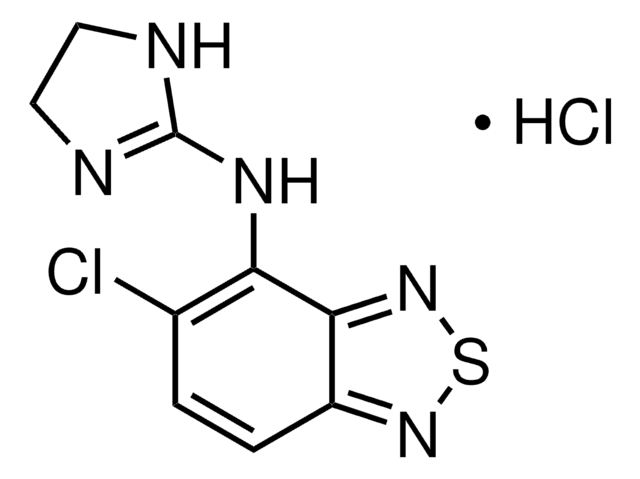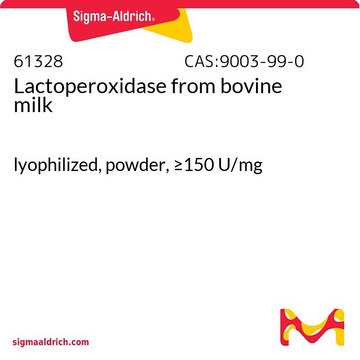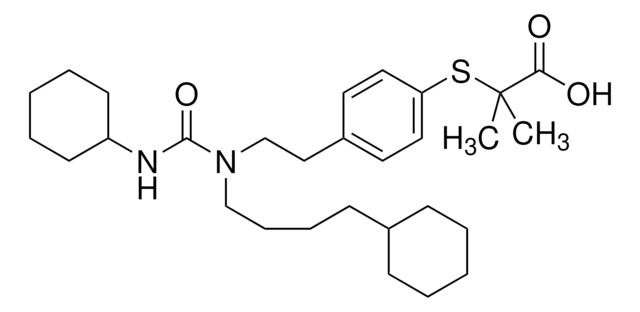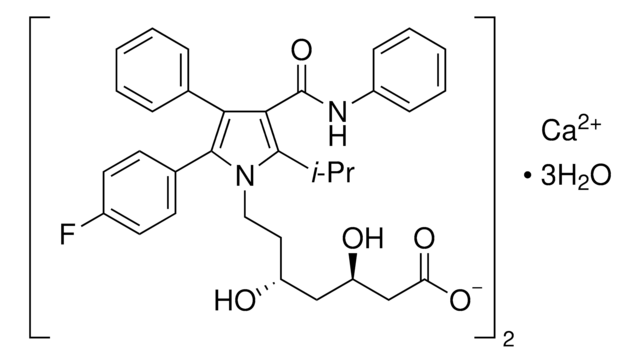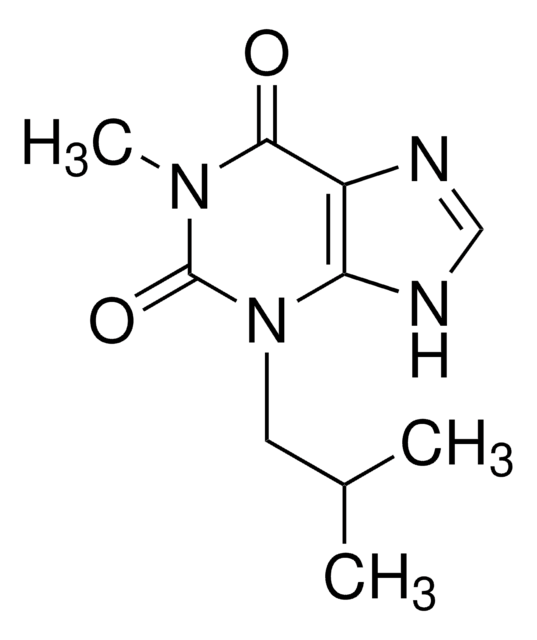M1559
Moxonidine hydrochloride
≥98%
Synonym(s):
4-Chloro-6-methoxy-2-methyl-5-(2-imidazolin-2-yl)aminopyrimidine hydrochloride, BDF-5895
About This Item
Recommended Products
Quality Level
Assay
≥98%
originator
Solvay
SMILES string
Cl.COc1nc(C)nc(Cl)c1NC2=NCCN2
InChI
1S/C9H12ClN5O.ClH/c1-5-13-7(10)6(8(14-5)16-2)15-9-11-3-4-12-9;/h3-4H2,1-2H3,(H2,11,12,15);1H
InChI key
ZZPAWQYZQVUVHX-UHFFFAOYSA-N
Gene Information
human ... ADRA2A(150) , ADRA2B(151) , ADRA2C(152) , NISCH(11188)
Application
- as a standard to study its blood-brain barrier (BBB) permeability in porcine brain lipid extract by parallel artificial membrane permeability assay (PAMPA) method
- as a standard to study the chromatographic behavior and lipophilicity by reversed-phase thin-layer chromatography (RP-TLC)
- as an imidazoline I1 receptor agonist to study its effects on excitatory inputs in airway vagal preganglionic neuron (AVPN)
Biochem/physiol Actions
Features and Benefits
Storage Class Code
11 - Combustible Solids
WGK
WGK 3
Flash Point(F)
Not applicable
Flash Point(C)
Not applicable
Personal Protective Equipment
Regulatory Information
Choose from one of the most recent versions:
Certificates of Analysis (COA)
Don't see the Right Version?
If you require a particular version, you can look up a specific certificate by the Lot or Batch number.
Already Own This Product?
Find documentation for the products that you have recently purchased in the Document Library.
Our team of scientists has experience in all areas of research including Life Science, Material Science, Chemical Synthesis, Chromatography, Analytical and many others.
Contact Technical Service